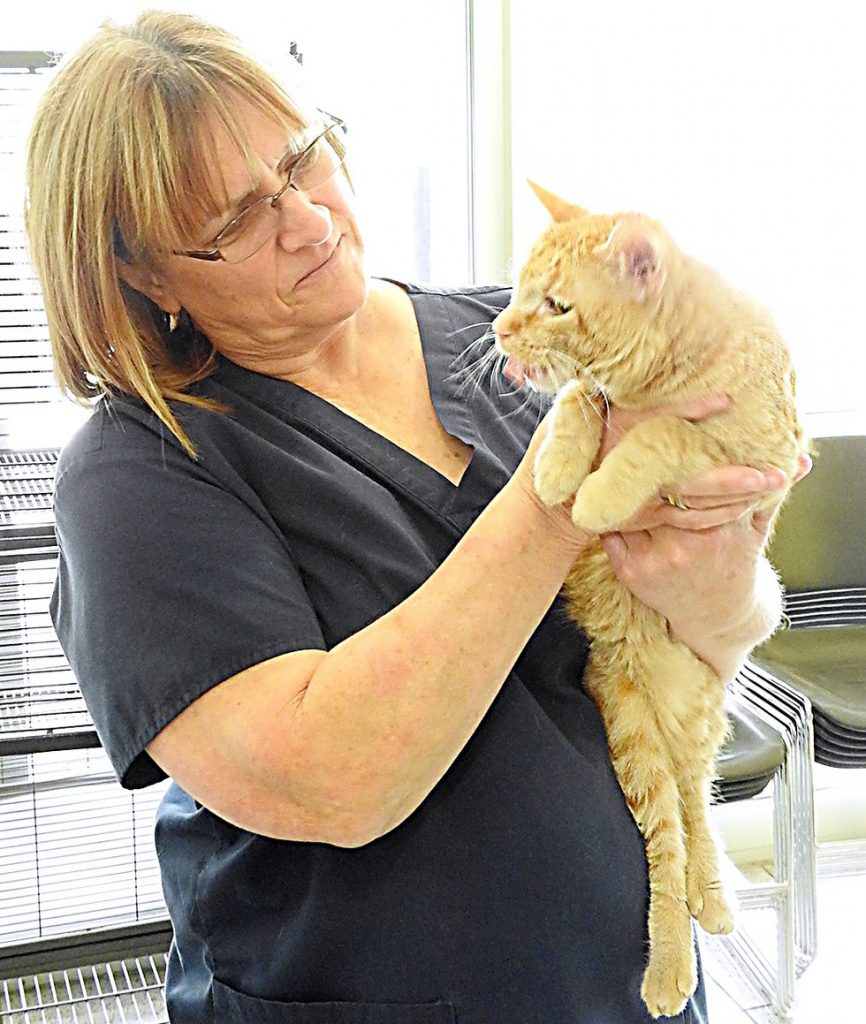“Here’s the problem,” explains Mary Kirlin, director of the Humane Society of Marathon County. “Someone from Wausau walks in the door with a stray cat in a cage. We would like to take the cat, but we can’t without law enforcement. But the humane officer doesn’t work 24/7, and other officers are pretty busy—sometimes they just can’t come. So then what do you do?”
You probably get annoyed and do nothing the next time you find a stray cat, as statistics from the Humane Society appear to show.
The shelter accepted 437 cats from Wausau in 2011, before the city changed its policy on handling and paying for “non-dog” strays. Last year, just 204 Wausau cats were brought to the shelter, and the HSMC is on track to take in fewer than 120 from the city in all of 2016, a 73% drop from five years ago.
That doesn’t mean hundreds of fewer stray or feral cats are roaming the streets, Kirlin says. Instead of being turned over to shelter staff, more cats are left to fend for themselves.
“They’re still out there, and they’re breeding,” Kirlin says.
Until 2013, the shelter had a single contract with Marathon County to handle strays that covered all municipalities. The county paid HSMC an annual fee, regardless of how many animals the shelter took in. This caused a budget crunch for the shelter, as it handled more animals every year.
At the same time, Wausau city leaders began brainstorming ways to improve animal control following a horrific case of animal abuse that drew international attention. In response, then-Alderman Keene Winters and other members of the Marathon County Animal Control Task Force asked the shelter to develop a round-the-clock county-wide program.

City leaders soon learned that paying animal control officers to cover the county 24/7 is expensive. After months of debate, Wausau rejected the shelter’s proposal, choosing instead to hire a its own full-time humane officer and pay the HSMC a per-animal fee.
Under the terms of the new agreement, stray cats found in Wausau now can be taken to the shelter only by the city’s humane officer or another member of law enforcement. The rule is a cost-saving measure to ensure municipalities pay only their share, says Linda Berner-Karger, president of the Humane Society’s board of directors. Schofield and Weston have similar arrangements.
It might make bookkeeping easier and more accurate, but it also makes it harder for residents themselves to deal with stray or feral cats. The result: a dramatic drop in the number of cats admitted to the shelter and widespread confusion.
Residents try to help, naturally, by bringing these cats to the shelter, but then are turned away and told to wait for the humane officer to collect the cat. “Some people don’t understand the rules, and sometimes they get pretty angry about it,” Kirlin says. (Residents themselves still may turn over stray dogs or any surrendered pet, including cats, with verification of ownership.)
Other communities in Marathon County do not have such policies, and have not seen similar drops in the number of cats taken to the shelter. Rib Mountain initially required law enforcement to turn over non-dog strays, but has since relaxed its policies.
Kirlin has nothing but praise for Ashlee Bishop, Wausau’s humane officer, but says the city’s policy has caused frustration for well-meaning residents.
The agreement calls for Wausau to pay HSMC $55,000 in 2016 for accepting up to 300 “non-dog” strays, and an additional $200 for any additional animals. If HSMC takes in fewer than 300 cats, the shelter credits $185 per animal back to the city. In 2014, for example, the city received $2,550 back from the shelter.
Another big issue—perhaps related to all the changes—is an array of misconceptions about how the shelter operates and how many animals are euthanized.
Kirlin says she frequently hears complaints that the HSMC charges a fee for dropping off stray dogs or surrendering pets. It doesn’t. There’s no cost to bring in these animals. Others say they avoid the shelter because they assume the vast majority of animals taken in are put to death.
“I’ve been called a killer,” Kirlin says. “Can you imagine how that feels? The truth is, we do everything we can to save these animals. “
Humane Society of Marathon County records back up Kirlin’s claims. Since Jan. 1, the shelter has taken in 180 dogs, with an average stay of 154 days. Of those, 80 were returned to their owner and 71 were adopted. One was transferred to another facility and one died on arrival. Only nine, or 5%, were euthanized.

Cats are another story. This year, the shelter has taken in 238 cats from all of Marathon County, with an average stay of 85 days. Of those, 99 were adopted, five died, 21 were returned to their owner, 38 were transferred, and 75 (31%) were euthanized.
The rate of euthanized cats is higher in part because many are wild and unadoptable, Kirlin says. Others become ill, putting the other cats at risk. “We want to save them all, but we can’t,” she says. “But we try. We really do.”
On June 6, the HSMC housed 122 cats and 22 dogs (plus three guinea pigs and a dove). The vast majority are available for adoption, some at reduced prices.
“Our goal is to help all of these animals,” Kirlin says. “If people have questions about what we do and how we do it, we want them to be free to ask.”




